The Concept Gasoline Direct Injection Engine
The most important challenge facing car manufacturers today is to offer vehicles that deliver excellent fuel efficiency and superb performance while maintaining cleaner emissions and driving comfort. Growing awareness of global warming as a big threat to the environment, has added yet another dimension to this challenge. In order to prevent global warming, the reduction of CO2, one of the greenhouse gases, is called for. In order to achieve reduction of CO2, there is an immediate need to develop and promote widely, the use of an automotive power plant that emits significantly less CO2 than conventional petrol engines.
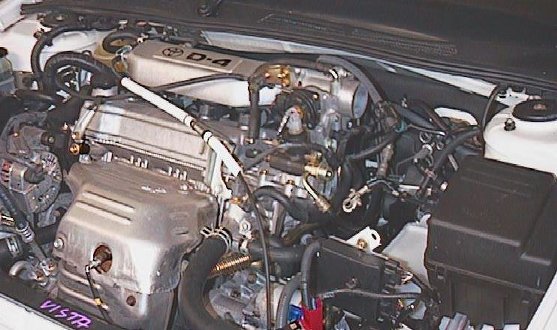

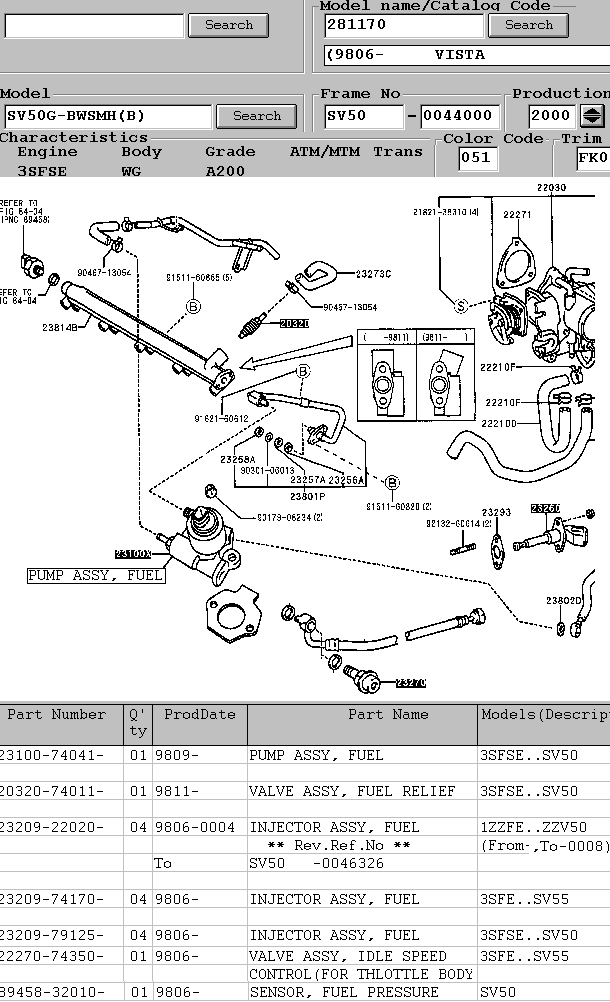

The Gasoline Direct Injection technologies are products efforts to maximize fuel economy, and thereby minimize environmental impact at an accessible price by harnessing the GDI's inherent advantages. They are designed to widen acceptance of environmentally friendly technology by negating problems associated with alternative engine technologies, namely price and performance restrictions as well as the lack of support infrastructure. GDI-technologies deliver a 10~30% improvement in fuel economy over a current GDI-engine, along with enhanced drivability.

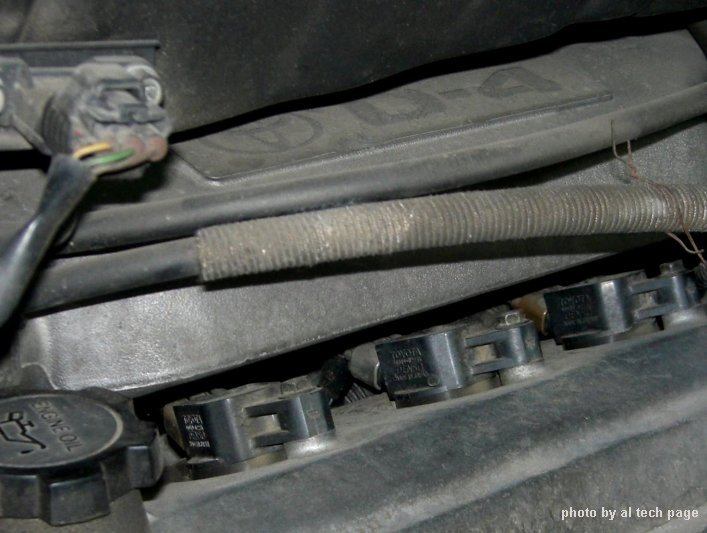
In the these engine, petrol is directly injected into the cylinder, eliminating many of the hitherto restrictions on combustion control, such as the impossibility of adding fuel after the induction valves were closed. By achieving precise combustion control that is free of restrictions, the GDI delivers a previously unseen combination of fuel economy and power. In conventional engines, fuel and air are mixed outside the cylinder. This ensures waste between the mixing point and the cylinder, as well as imperfect injection timing. But in the Toyota D4 engine, petrol is injected directly into the cylinder with precise timing, eliminating waste and inefficiency.
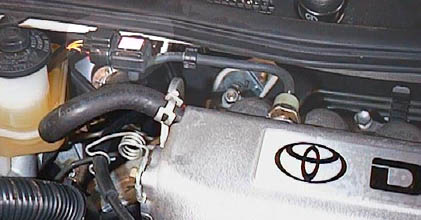
For years, engineers have known that if they could build a petrol engine that worked like a diesel engine-in other words, one in which fuel is injected directly into the cylinder and the stratified, rich mixture right near the spark plug is ignited-they would have an engine that achieved both the fuel efficiency of a diesel engine and attained the high output of a conventional petrol engine. However, development of such an engine has been impeded by petrol's poor combustibility. Diesel engines operate on a thermodynamic cycle, meaning that as long as a sufficient temperature is reached, thorough ignition will occur regardless of the air/fuel mixture condition. In order to achieve combustion with petrol, gaseous fuel and air must be mixed to form just the right air/fuel mixture, and precise control of position and timing of the air/fuel mixture is necessary to ensure delivery of this mixture to the very limited space between the spark plug electrodes in the very specific timing of ignition. The Gasoline Direct Injection engine is able to achieve this through technology that enables precise control over the air/fuel mixture.


The GDI engine's ability to precisely control the mixing of the air and fuel is due to a new concept called wide spacing, whereby injection of the fuel spray occurs further away from the spark plug than in a conventional petrol engine, creating a wide space that enables optimum mixing of gaseous fuel and air. In stratified combustion (Ultra-Lean Mode), fuel is injected towards the curved top of the piston crown rather than towards the spark plug, during the latter stage of the compression stroke. The movement of the fuel spray, the piston head's deflection of the spray and the flow of air within the cylinder cause the spray to vaporize and disperse. The resulting mixture of gaseous fuel and air is then carried up to the spark plug for ignition. The biggest advantage of this system is that it enables precise control over the air-to-fuel ratio at the spark plug at the point of ignition.
In spring 1999, Mitsubishi has entered a GDI-equipped car (Carisma witch 1.8-litre 4G93 GDI engine, ) in Europe that satisfies lower European emission standards proposed for the year 2000, while in autumn 1999 MMC has entered a GDI-equipped car in North America that complies with U.S. Ultra-Low-Emission Vehicle (ULEV) standards. Toyota lets out automobiles with D-4 (GDI) by engines (3S-FSE, 2.0-litre; 1JZ-FSE, 2.5-litre) in 1998 and only for a home market: Vista, Nadia etc. Nissan makes the NEO Di+HYPER CVT 3.0-litre Engines VG30dd (PS/rpm - 230/6400). BOSCH lets out a system GDI - Moronic MED7.
Mitsubishi released the ultra-efficient GDI engine in August 1996, becoming the world's first automaker to successfully build a production in-cylinder direct-injection gasoline engine. For many years the dream of automotive engineers, the GDI engine employs four core technologies to achieve ultra-efficient fuel economy, clean performance and powerful output. These exclusive Mitsubishi technologies are the "upright intake port" that generates smooth intake flow and a powerful vertical vortex; the "high-pressure fuel pump" that is necessary to inject fuel directly into the cylinder; the "high pressure swirl injector" that injects the fuel in an optimised spray pattern; and the "curved top piston" that maintain the compact spray pattern. By adopting these innovative technologies, we gained free control over the fuel-air mixture and combustion, minimised emission gases, at the same time increasing fuel economy and output. The GDI engine has earned worldwide acclaim, and over 600,000 Mitsubishi cars are already equipped with the technology.
Gasoline Direct Injection Engine

 Jсобенности этой инжекторной системы на примере двигателя 3S-FSE, DOHC, 16V, VVT-i, (E-SCV) Toyota (D4=Direct Injection, 4 Stroke Gasoline Engine).
Jсобенности этой инжекторной системы на примере двигателя 3S-FSE, DOHC, 16V, VVT-i, (E-SCV) Toyota (D4=Direct Injection, 4 Stroke Gasoline Engine).
- Direct gasoline injection
- Dynamic mixture formation
- Decisive combustion control
- Delightful performance
Главная особенность двигателей прямого впрыска заключается в том, что топливо подается непосредственно в цилиндры через форсунки, которые установлены в блоке и под давлением в десятки раз больше, чем в обычных инжекторных системах. Как следствие, значительно повышается степень распыления топлива и улучшается его сгорание. Давление в топливной системе создается насосом высокого давления (High pressure Fuel Pump) с механическим приводом.


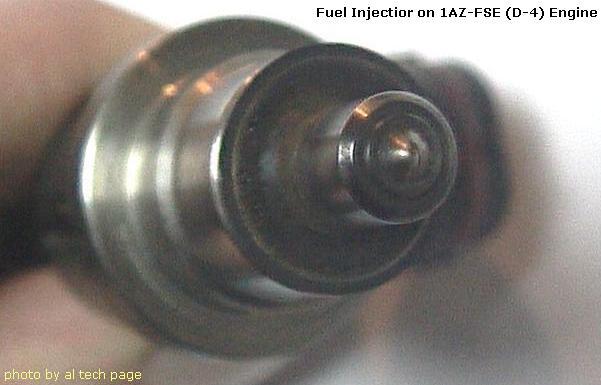
Достаточна примечательна геометрия верхней поверхности поршней. Основное её назначение - это формирование ламинарного потока топливно-воздушной смеси в полости поршня. Т.о. реализуется нечто аналогичное фор-камере, в которой происходит "взрыв" топливной смеси.
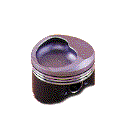

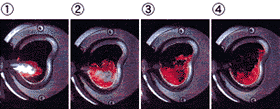
Значительная часть навесного оборудования описываемой инжекторной системы осталась без изменений. Например, MAP-Sensors, Oxygen Sensors, TPS. Необычно расположение ECM - непосредственно под капотом...

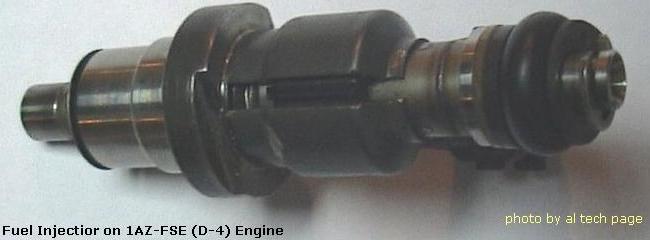
Небольшая дискуссия о диагностике 1AZ-FSE
В D-4 также используется система переменного газораспределения (VVT-i, Variable Valve Timing-intelligent), которая позволяет увеличить крутящий момент и мощность двигателя при одновременном снижении токсичности выхлопных газов.
Для снижения уровня вредных выбросов NOx применена обычная система EGR (Exhaust-gas recirculation), с помощью которой часть выхлопных газов подается в цилиндры, что смещает равновесие реакции образования NOx в сторону уменьшения их количества. GDI-технология позволяет достичь высокой плотности топливно-воздушной смеси, что делает возможным использовать значительное увеличение количества EGR без риска снижения устойчивости сгорания. В результате этого количество NOх в выхлопных газах уменьшается на 70...95 %.
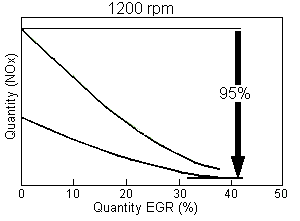
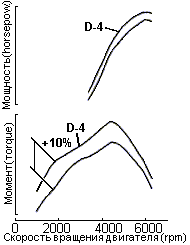
Применённые конструктивные и прочие решения позволили получить значительное улучшение показателей мощности и крутящего момента при одновременном повышении экономичности и снижении уровня токсичности выхлопных газов автомобиля. Аналогичные приращения показателей у двигателя 1JZ-FSE VVT-i D-4 (BEAMS: Breakthrough Engine with Advanced Mechanism System).
Сравнительная таблица параметров двигателей 3S-FSE и 3S-FE

Двигатели с прямым впрыском топлива используют несколько датчиков O2, до и после каталитического конвертера. Для того, чтобы двигатель мог работать в режиме обедненной смеси, входной датчик (до каталитического конвертера) должен быть способен обнаружить обедненную смесь (λ > 1). Для этого используются специально разработанные широкополосные датчики содержания кислорода. Благодаря их специальной конструкции, они достигают заданной рабочей температуры всего лишь за несколько секунд. В результате их применения существенно сокращаются вредные выделения во время прогрева двигателя, что позволяет добиться соответствия требованиям Euro IV и ULEV.
Статья о диагностике и ремонте "прямого впрыска" Ниссан High Pressure Pump Nissan (VQ25DD)
Some photo MMC GDI Engine
See other inform in SAE TECHNICAL PAPER No.2000-01-0531 (Book Number: SP-1499)

